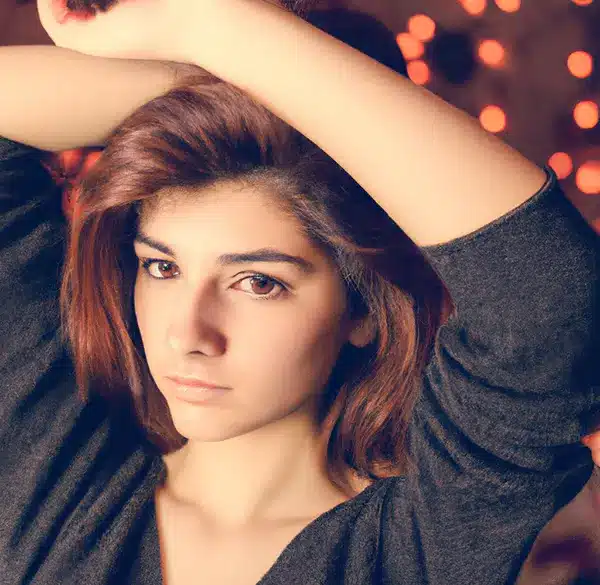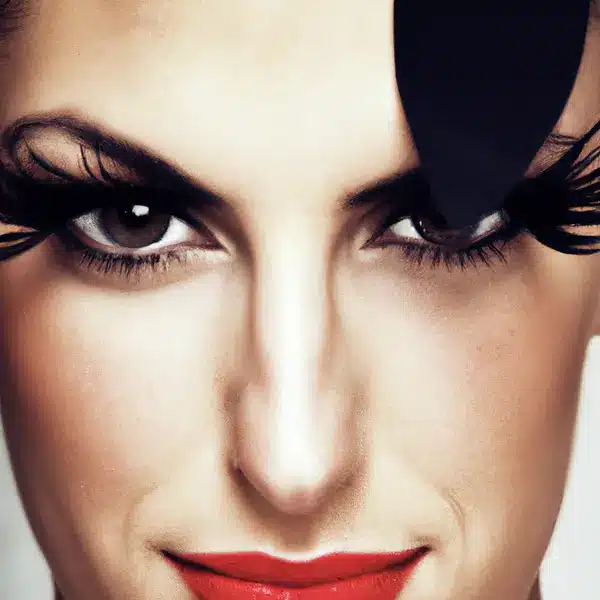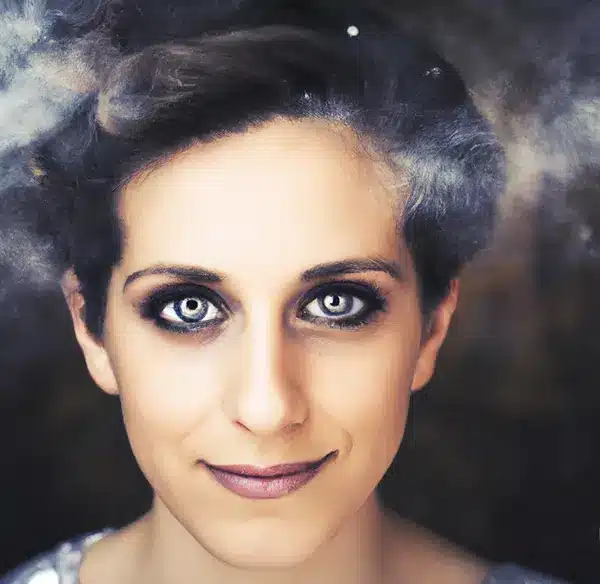Long before the invention of the camera, the human desire to capture likenesses led to the creation of painted and sculpted portraits. These early portraits, often reserved for the elite and powerful, were more than mere representations; they were symbols of authority, status, and even divinity. As art and technology evolved, so did the accessibility and purpose of portraiture. With the advent of photography in the 19th century, capturing a likeness became quicker and more affordable, democratizing the art of the portrait. From the stiff postures of early daguerreotypes to the candid snapshots of the digital age, portrait photography has continuously evolved, reflecting societal changes and technological advancements. Historical works like ‘The Americans’ by Robert Frank have significantly influenced the trajectory of photographic narratives, offering a unique perspective on society.
The Modern Significance of Portrait Photography
In today’s digital age, portrait photography has taken on new dimensions. While it still serves traditional purposes, such as commemorating milestones or capturing family memories, it also plays a pivotal role in modern culture and communication. Social media platforms are awash with portraits, from carefully curated profile pictures to spontaneous selfies.
Beyond personal use, portraits are integral to industries like fashion, advertising, journalism, and entertainment. They shape public perceptions, tell stories, and even drive social change. At its core, however, portrait photography remains a deeply personal art form. It’s a means of self-expression for both the photographer and the subject, a way to capture the essence, emotion, and narrative of an individual or group.
Whether it’s a grandparent’s weathered face, a child’s innocent gaze, or a celebrity’s poised demeanor, portraits offer a window into the soul, revealing the stories, dreams, and experiences that shape our shared humanity. Platforms like Instagram have revolutionized how we engage with portraits, turning them into powerful tools for visual storytelling in the digital age.

Understanding the Basics of Portrait Photography
Defining Portrait Photography
What Qualifies as a Portrait?
A portrait is more than just a photograph of a person. It’s a visual representation that captures the essence, personality, and mood of the subject. While the face is often the primary focus, a portrait can encompass the whole body, a silhouette, or even a close-up of a specific feature. The key is the intent behind the image: to reveal something intrinsic about the individual or group being photographed. Beyond mere representation, portraits also touch upon deeper photographic concepts like indexicality, adding layers of meaning and interpretation.
The Distinction Between a Picture and a Portrait
While all portraits are pictures, not all pictures are portraits. A picture is a broad term that refers to a visual representation of something, be it a person, an object, or a landscape. A portrait, on the other hand, is specifically tailored to depict a person or group of people with the intention of conveying some depth of character or essence. It’s the difference between a casual snapshot and a thoughtfully composed image that seeks to tell a story or convey an emotion about its subject.
Types of Portraits
Traditional Portraits: The Classic Look
Traditional portraits are formal and posed, often set against a neutral background. They emphasize the subject, with the individual typically looking directly at the camera. These are the types of portraits you might find in official documents, corporate profiles, or classic family albums.

Lifestyle Portraits: Capturing Everyday Moments
Lifestyle portraits are more candid and natural. They aim to capture individuals in their everyday environments, doing regular activities. The emphasis here is on authenticity, capturing real moments and genuine emotions.
Environmental Portraits: Merging Subject with Setting
Environmental portraits place the subject within a context, often related to their profession, hobby, or identity. For instance, a musician might be photographed in a studio or a fisherman by the sea. The environment becomes an integral part of the story, offering insights into the subject’s life and character.
The Role and Responsibilities of a Portrait Photographer
Crafting the Vision: The Artistic Side
A portrait photographer is not just a person behind a camera; they are visionaries who craft stories through images. They must have a keen eye for detail, understanding how elements like lighting, composition, and angle can dramatically change the narrative of a photograph. Beyond the technicalities, they need to tap into their creativity, envisioning the final result even before the shutter is pressed. This artistic foresight helps in guiding the subject, setting the scene, and making on-the-spot decisions during the shoot.
Technical Mastery: Equipment and Settings
While the artistic vision is paramount, a portrait photographer must also possess technical expertise. This includes understanding the intricacies of their equipment, from choosing the right lens and camera settings to mastering post-processing techniques. Knowledge of how different lenses affect facial features, how to achieve the desired depth of field, and how to manipulate lighting, both natural and artificial, are crucial. In the digital age, skills in photo-editing software can elevate a portrait from good to outstanding, allowing photographers to fine-tune details, adjust colors, and enhance the overall mood of the image.
Building Rapport: The Human Connection
Perhaps one of the most overlooked yet vital skills of a portrait photographer is the ability to connect with their subjects. A portrait is a collaboration between the photographer and the subject. Building a rapport helps the subject feel at ease, leading to more natural and authentic portraits. This connection starts from the first interaction, understanding the subject’s vision, making them comfortable during the shoot, and ensuring they trust the photographer’s expertise. It’s this human connection that often determines the difference between a flat, lifeless image and a portrait bursting with emotion and personality. While traditional techniques remain foundational, the intersection of AI and photography is ushering in a new era, reshaping how we approach and understand the medium.
Delving into the Artistry of Portraits
Composition in Portraits
Centered vs. Off-Center Framing
Composition is the arrangement of elements within a photograph, and it plays a pivotal role in guiding the viewer’s eye. While centered compositions can give a sense of balance and importance to the subject, off-center or rule-of-thirds compositions can introduce dynamism and interest, leading the viewer’s eye across the image. The choice between centered and off-center often depends on the mood the photographer wishes to convey and the environment in which the subject is placed.

The Rule of Thirds in Portrait Photography
The rule of thirds is a fundamental principle in photography where the frame is divided into nine equal rectangles, three horizontally and three vertically. Placing the subject along these lines or at their intersections can create balance and interest. For portraits, this often means positioning the subject’s eyes along the top horizontal line, though the rule can be adapted based on the portrait’s intent.
Expressions and Emotions
The Power of the Human Gaze
The eyes are often referred to as the “windows to the soul,” and in portrait photography, they hold immense power. The direction of the subject’s gaze, whether they’re looking directly into the camera, looking away, or even looking off-frame, can evoke different emotions and stories. A direct gaze can create a connection with the viewer, while averted eyes might introduce an element of mystery or introspection.

The Debate: Smiling vs. Neutral Expressions
Should a subject smile in a portrait? The answer isn’t straightforward. While smiles can convey warmth, happiness, and approachability, neutral or serious expressions can evoke depth, introspection, and authenticity. The choice often depends on the portrait’s purpose. For instance, corporate headshots might favor neutral expressions, while personal portraits might lean towards genuine smiles. Ultimately, the expression should feel natural and fit the narrative the photographer and subject wish to convey.
Technical Aspects of Portrait Photography
Camera Settings and Equipment
Ideal Camera Settings for Portraits
Achieving a captivating portrait often requires a blend of the right camera settings. A shallow depth of field, typically achieved with a wide aperture (like f/1.8 or f/2.8), helps isolate the subject from the background, making them the focal point. A faster shutter speed, especially in natural light, ensures the subject remains sharp, while a lower ISO helps maintain image quality by reducing noise.
The Role of Lenses in Defining the Shot
Different lenses can dramatically alter the feel and look of a portrait. While a 50mm lens offers a perspective close to the human eye, making it versatile for various portrait styles, an 85mm or 105mm lens can provide flattering compression for close-ups. Wide-angle lenses, though not traditional for portraits, can be used creatively, especially for environmental portraits where the backdrop plays a significant role.
Lighting in Portrait Photography
Natural Light: Harnessing the Sun
Natural light, when used effectively, can produce stunning portraits. The golden hours—shortly after sunrise and just before sunset—offer soft, diffused light that can illuminate the subject evenly and create a warm tone. However, shooting in midday sun can introduce harsh shadows. In such cases, using reflectors to bounce light or seeking shaded areas can mitigate the challenges.
Studio Lighting: Crafting the Perfect Ambiance
Studio lighting offers controlled conditions, allowing photographers to shape and modify light as they see fit. Key lights, fill lights, and backlights can be adjusted to create desired effects, from dramatic contrasts in chiaroscuro portraits to evenly lit, high-key images. Softboxes and diffusers help soften the light, reducing harsh shadows and giving a more natural feel.

Addressing Common Questions and Myths
Portrait Composition Queries
Full Body vs. Close-Up: What Defines a Portrait?
A portrait is not limited by the amount of the subject it captures. While close-ups or headshots focus on the face, conveying emotions and nuances, full-body portraits tell a broader story, often incorporating the environment and the subject’s attire. Both have their place in portrait photography, and the choice depends on the story the photographer wishes to convey.

The Centrality Debate: Does a Portrait Have to Be Centered?
A portrait doesn’t always have to be centered. While central framing can give a symmetrical, balanced feel, off-center compositions can introduce dynamism and depth. Using techniques like the rule of thirds can guide the viewer’s eye and add interest to the portrait.
Subject and Expression Queries
The Significance of Faces in Portraits
While faces are often the focal point of portraits, capturing the essence of a subject doesn’t always require showing the face. Silhouettes, shots from behind, or focusing on other body parts can still convey emotion, mood, and narrative.
Why Some Subjects Look Away or Avoid Direct Gaze
Looking away from the camera can introduce a sense of candidness, introspection, or mystery to a portrait. It can make the viewer wonder what the subject is thinking or looking at, adding depth to the image. It’s a stylistic choice that can evoke different emotions compared to a direct gaze.

The Impact and Purpose of Portraits
Portraits as Historical Records
Throughout history, portraits have served as visual records, capturing individuals and cultures for posterity. From ancient Egyptian wall paintings to Renaissance portraitures, these images offer glimpses into bygone eras, preserving details of attire, status, and even societal norms. In modern times, portraits continue to document our evolving world, capturing moments and movements that shape history. Artists like Cindy Sherman have transformed portrait photography, using it as a medium to challenge and redefine societal norms.
The Emotional and Psychological Impact on Viewers
A well-crafted portrait has the power to evoke a myriad of emotions in viewers. Whether it’s empathy, admiration, curiosity, or even discomfort, portraits can resonate deeply, creating a connection between the viewer and the subject. This emotional impact is not just about the subject’s expression but also the composition, lighting, and context in which the portrait is presented. The resonance of a portrait often lies in its emotional depth. Grasping how images evoke feelings is key to understanding their profound impact.
Portraits in Modern Media and Advertising
In today’s media-driven world, portraits play a pivotal role in shaping perceptions and influencing decisions. From magazine covers and celebrity photoshoots to advertising campaigns, portraits are used to convey messages, sell products, and build brands. They can humanize issues, making them relatable, or glamorize products, making them desirable. The power of a portrait in modern media is undeniable, with images often becoming iconic and defining moments in pop culture.
Advanced Techniques and Styles in Portrait Photography
Innovative Techniques
The Brenizer Method: Expanding Depth of Field
A technique popularized by photographer Ryan Brenizer, this method involves taking multiple shots of a subject and then stitching them together in post-processing. The result is a portrait with a shallow depth of field (due to a wide aperture) but a wide-angle perspective. This creates a unique look, allowing for a sharp subject against a beautifully blurred background, even when the subject and background are relatively close together.
Black and White Portraiture: Timeless Elegance
Stripping a portrait of its colors can bring out the raw emotions and nuances often overshadowed by vibrant hues. Black and white portraits offer a timeless, classic feel, emphasizing contrasts, textures, and tones. They can evoke nostalgia, drama, or simplicity, making them a powerful tool in a photographer’s arsenal. Historical movements like pictorialism have left their mark on portrait photography, emphasizing the artistic over the purely representational.
Specialized Portraiture Styles
Candid Portraits: Capturing Unscripted Moments
Moving away from posed and planned shots, candid portraits capture subjects in their natural, unguarded moments. Whether it’s a spontaneous laugh, a thoughtful gaze, or a fleeting expression, these portraits offer authenticity and spontaneity, making them deeply relatable and genuine.
Conceptual Portraits: Merging Imagination with Reality
Conceptual portraits are not just about capturing a face but conveying an idea or a story. They often involve elaborate setups, props, costumes, and post-processing to bring a concept to life. These portraits blur the lines between reality and imagination, offering viewers a glimpse into the photographer’s mind and the subject’s narrative.

Tutorials and Learning: Enhancing Your Portrait Photography Skills
In the digital age, learning has become more accessible than ever. For those eager to delve deeper into the art and science of portrait photography, several online platforms offer comprehensive courses tailored to both beginners and professionals.
- Skillshare: A popular online learning community, Skillshare boasts a variety of courses on portrait photography. From mastering the basics to exploring advanced techniques, the platform provides a plethora of options for enthusiasts. While I couldn’t access specific courses during my search, you can explore their offerings on portrait photography here.
- Udemy: Another renowned e-learning platform, Udemy offers a wide range of courses tailored to different aspects of portrait photography. Whether you’re looking to understand lighting nuances or post-processing tricks, Udemy has a course for you. Check out their portrait photography courses here.
- Coursera: Partnering with top universities and organizations worldwide, Coursera offers courses that often blend artistic insights with technical expertise. For instance, “Seeing Through Photographs” by The Museum of Modern Art delves into the art of photography, providing a broader perspective that can be invaluable for portrait photographers. Explore Coursera’s offerings on portrait photography here.
Sharing and Engaging: Platforms for Portrait Photography Enthusiasts
Navigating the world of portrait photography? There are several platforms where you can both showcase your work and connect with fellow enthusiasts:
- Flickr: A long-standing favorite, Flickr offers specialized groups dedicated to portrait photography. It’s a space to share, receive critiques, and discuss techniques with a vast community.
- 500px: Beyond just a platform for displaying your portraits, 500px connects you with a global network of professionals and hobbyists. It’s an excellent place for feedback and exposure.
- Instagram: While it’s primarily known as a social media platform, Instagram has become a hub for photographers. Use hashtags like #PortraitPhotography or #PortraitPage to make your work discoverable and to engage with a global community of portrait photographers.
- PhotographyForum & DPReview’s forums: For those seeking in-depth discussions and advice, these forums are goldmines. Engage with seasoned photographers, get constructive critiques, and immerse yourself in the world of portrait photography.
Conclusion: The Timeless Allure of Portrait Photography
Portrait photography, in its essence, is a celebration of humanity. It’s a medium that transcends time, culture, and technology, capturing the myriad emotions, stories, and nuances that define us as individuals and as a collective. From the regal portraits of yesterdays to the candid snapshots of today, this art form has continuously evolved, yet its core remains unchanged: the quest to capture the human spirit.
The power of a portrait lies not just in its composition or technique but in its ability to connect. A well-crafted portrait speaks to the viewer, evoking emotions, sparking curiosity, and often leaving an indelible mark. It’s a testament to the photographer’s skill and the subject’s authenticity, coming together to create a moment frozen in time.
As we’ve journeyed through the intricacies of portrait photography, from its technical aspects to its profound impact, one thing becomes clear: portraits are more than just images. They are narratives, memories, and reflections. They challenge perceptions, break stereotypes, and often become catalysts for change.
In an age where images flood our screens and vie for our attention, the timeless allure of portrait photography stands tall. It reminds us of our shared experiences, our diverse stories, and the beauty that lies in every face. Whether you’re a seasoned photographer, an aspiring artist, or simply an appreciative viewer, the world of portrait photography invites you to explore, experiment, and experience the magic it holds.
Very informative blog. keep doing the good work. I found some useful information from this article. Thank you for your great effort for your community.
I have a similar topic/blog site anyone can check out https://pathfoto.com/.